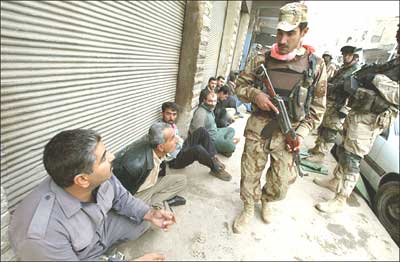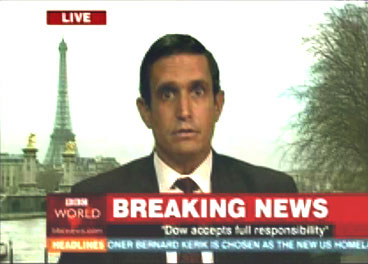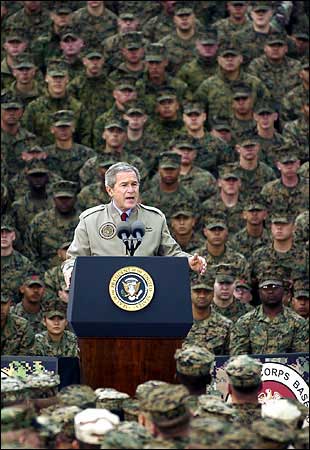Notes
The Flash Of Early Warring

The best news images from Iraqi are the ones that prefigure the direction of a story days or even weeks before someone puts words to it.
If you read the NYTimes this Sunday, you would have noticed references (in several places) to a potential Iraqi “civil war.” However, I’d say this front page image that ran on November 30th broached the possibility a week earlier.
Why do I say that?
Nominally, the story ( “U.S. Officials Say Iraq’s Forces Founder Under Rebel Assaults”) was about the shortcomings of the Iraqi National Guard. In that context, the picture was more than a fine choice. It indicated how the Iraqi forces have been unable to intercede in the insurgency without American forces there to back them up. It also spoke to some of the issues contributing to the problem, including the fact the Iraqi’s are working with outdated weapons and equipment.
In reflecting other information in the article, however, the image actually exceeded the scope of the story. The caption serves as a good reference for what the article did and didn’t highlight. It read:
An Iraqi National Guard soldier watched several Iraqi men detained in a joint raid with American troops in the Old City of Mosul on Saturday.
What you might not have picked up, however, unless you read deeper into the article, was the fact that the vast majority of the Iraqi National Guard battalions in Mosul had deserted earlier in the month. To replace them, Kurdish soldiers had been brought in, even though this stirred up intense ethnic tension with the primarily Arab population.
Drawing from the full content of the story, the picture expressed something larger and more divisive than what the article happened to focus on. This wasn’t just a picture of a security problem, showing U.S. troops standing by to support a local recruit. Rather, the picture described a hostile local Arab populace being policed by the American-backed military forces of an imported ethnic group.
In other words (or, more accurately, in no words) it was suggestive of civil war.
(photo: Shawn Baldwin for The New York Times)


Reactions
Comments Powered by Disqus